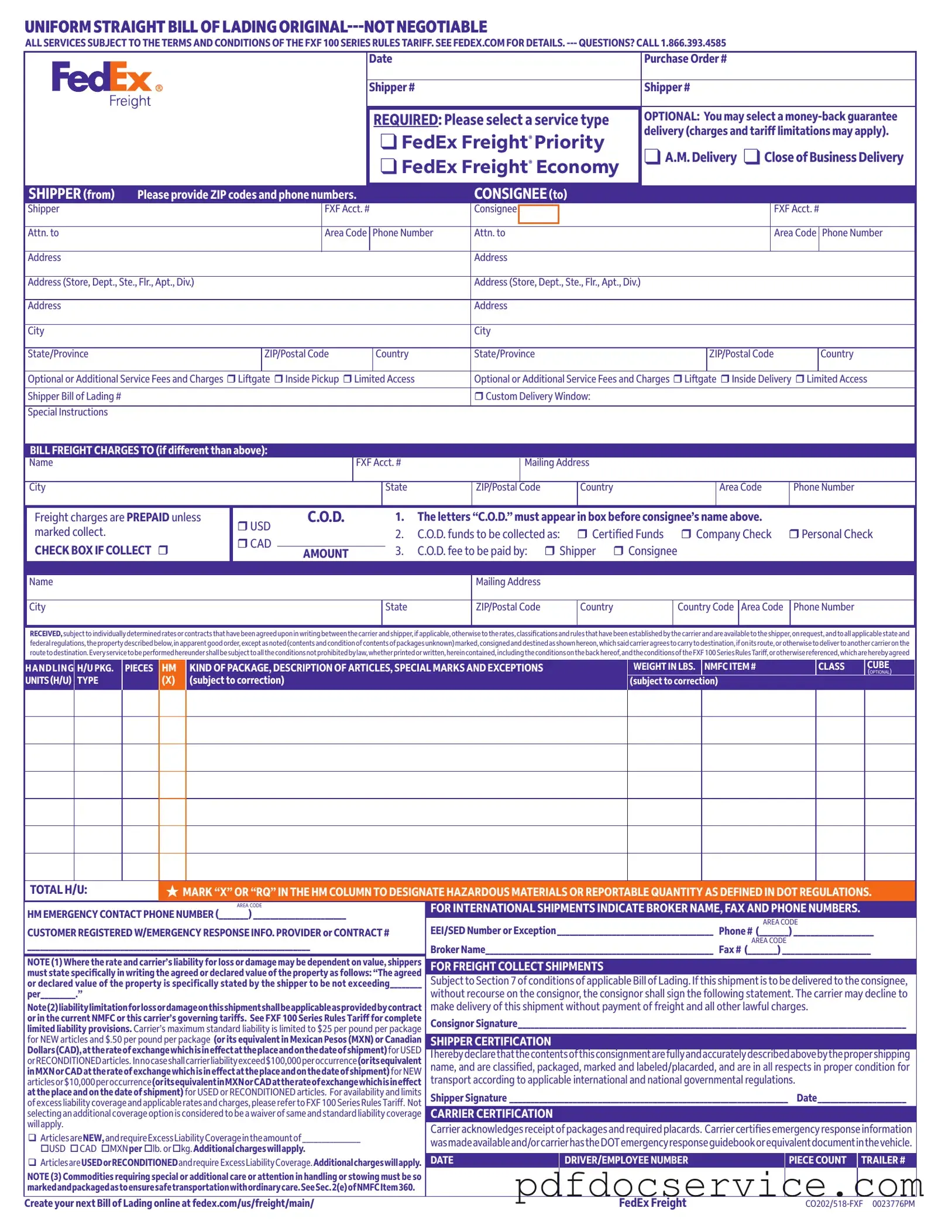What is a FedEx Bill of Lading?
The FedEx Bill of Lading is a crucial shipping document that outlines the details of a freight shipment. It serves as a receipt for the goods being transported and provides important information about the shipment, including the shipper and consignee details, service type, and any special instructions. This document is essential for both the shipper and carrier to ensure proper handling and delivery of the goods.
How do I fill out the FedEx Bill of Lading?
To complete the FedEx Bill of Lading, follow these steps:
-
Enter the date and purchase order number at the top of the form.
-
Provide the shipper's and consignee's information, including names, addresses, and contact numbers.
-
Select the service type you require, such as FedEx Freight Priority or Economy.
-
If applicable, indicate any optional services like liftgate or inside delivery.
-
Specify the freight charges, ensuring to mark if they are prepaid or if you require a C.O.D. service.
-
List the details of the items being shipped, including weight and dimensions.
-
Sign the document to certify that the information is accurate.
What types of service options are available?
FedEx offers several service options for freight shipments, including:
-
FedEx Freight Priority - for expedited delivery.
-
FedEx Freight Economy - for cost-effective shipping.
-
A.M. Delivery - for morning delivery needs.
-
Close of Business Delivery - for end-of-day delivery.
Optional services, such as liftgate and inside delivery, may also be selected based on your needs.
What should I do if my shipment contains hazardous materials?
If your shipment includes hazardous materials, you must mark the appropriate box on the Bill of Lading. Additionally, ensure that all materials are properly classified, packaged, and labeled according to regulations. It is crucial to provide emergency contact information and comply with all safety guidelines to facilitate safe transportation.
How is liability determined for my shipment?
Liability for loss or damage during transport is determined by the value declared on the Bill of Lading. The carrier's maximum liability is typically limited to $25 per pound for new articles and $0.50 per pound for used items. If you wish to declare a higher value, you must specify it in writing on the form. Additional charges may apply for excess liability coverage.
Can I track my shipment using the Bill of Lading?
Yes, you can track your shipment using the Bill of Lading number. Once the shipment is in transit, you can enter this number on the FedEx website or contact customer service to receive updates on your shipment's status.
What happens if I need to make changes after submitting the Bill of Lading?
If you need to make changes to the Bill of Lading after submission, contact FedEx customer service as soon as possible. Depending on the nature of the changes, they may be able to assist you in updating the information. However, be aware that changes may affect the shipment's delivery schedule and charges.
For more detailed information about FedEx shipping terms and conditions, visit the FedEx website. You can find the FXF 100 Series Rules Tariff, which outlines all applicable rules, charges, and liability limitations for freight shipments.
